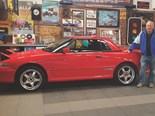Piston Broke 1981 Holden Commodore – Our Shed
Glenn Torrens silences a sinister sound from his resurrected 1981 Holden Commodore’s six-cylinder engine.

|
|
Another Friday night working on engines in the shed. Is this punishment for persisting with old cars?
|
Many of us will know the thought: It’s the "hmmm ... what’s that noise?" question that sometimes crosses our minds when the cobwebs have been cleared and the dust has settled after starting a shed-, paddock- or backyard-find car engine.
It was the thought I had about my 1981 VC Holden Commodore I found in a wrecking yard in Cooma, NSW where it had sat for 25 years.
Driven around the yard, then on to a trailer and towed home for a resurrection, it was in the quiet confines of my garage that I’d first noticed a mystery murmur from the 3.3 six-cylinder engine.
Hmmm. What’s that noise?

Any older engine – the odo of this showed 170,000km and of course it’s more than 40 years old - can produce a multitude of noises.
Hydraulic lifters can make a tick-tick sound before the oil pressure pumps-up after a cold start, or if it fades as a hot engine idles. More ominously, worn crank bearings can create a deep rumble.
A damaged conrod bearing has a distinct doonk-doonk noise as its gap is slammed shut when the piston above it takes the load of compression.
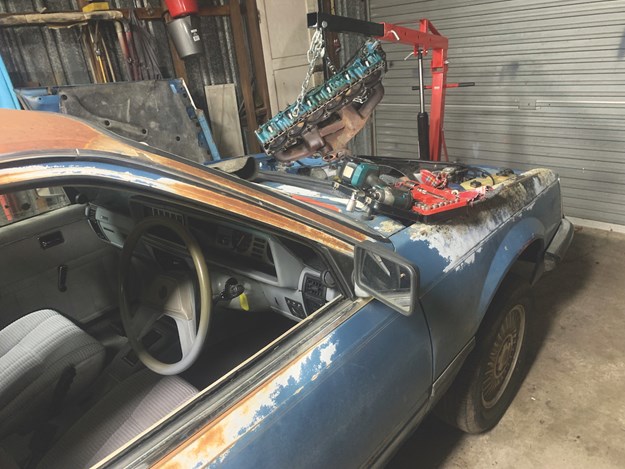 |
| To save time and effort, I kept the intake and exhaust manifolds assembled to the head to lift the whole lot from the block. |
A gudgeon pin, if worn or loose, can chatter, as can a piston, if it is badly worn or cracked.
Judging by the sound – and a few other clues – it wasn’t a dud lifter creating the sound in my Holden six.
The annoying noise with the engine fast-idling disappeared as the engine warmed. But it could be heard again when the throttle was snapped open with the car in-gear… but only sometimes!
The noise seemed to be coming from sort-of mid-height of the rear half of the motor. By disconnecting the rear three spark plug leads one-by-one, I isolated the noise to cylinder five; the noise was eliminated with its lead disconnected.
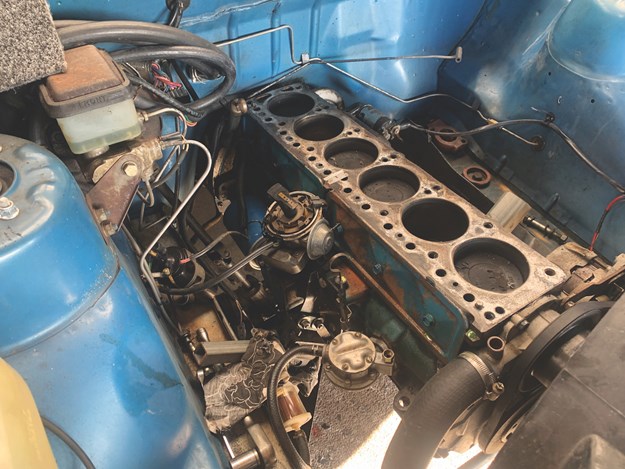 |
| With the head off, I could see the cylinder bores were all in good shape. Plenty of cruising life remains in this mighty 3.3-litre six! |
Of course, I bought this Commodore expecting to do plenty of work – from fixing rust to replacing parts – to get it back on the road, but it was a shame that I had to ‘go inside’ the engine. But hey, that’s life with old cars!
I reckoned/guessed the noise was a sloppy piston pin.
I grabbed another standard-size second-hand piston from a disassembled Blue 3.3 motor and crossed my fingers I could confirm and correct the problem.
 |
| No, it's isn't a rude drawing... the Texta highlights the three big cracks I discovered. I wonder what caused the cracks? |
To find and fix that cylinder’s internal problem meant removing the cylinder head and sump so the piston and its rod could be removed.
I’d done this before, with my now-sold brown VB Commodore 3.3 wagon, so with some experience I wasn’t too daunted by this task.
One Friday night, I backed my car into the garage and drained the coolant and oil. Then I removed the bonnet and dropped the exhaust and front sway bar to allow the head and sump to be removed easily.
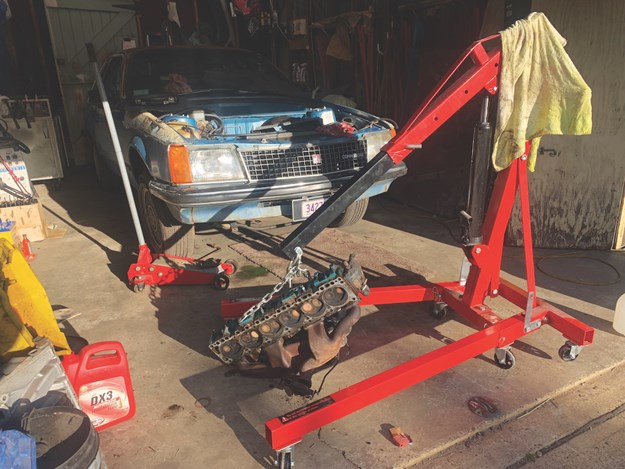 |
| Garage space and the right tools are essential for a job like this. |
To simplify the process, I kept the carby and the intake and exhaust manifolds installed to the head and simply lifted the whole lot from the engine with my engine crane.
With that done, I loosened the engine mounts and jacked-up the engine and removed the sump. So far so good …
Within a few hours that evening I had the number five piston in my hand. Even in the darkness of my garage, I could see a funny shiny pattern on the piston’s skirt… then another and another. The shiny bits were the edges of three big cracks in the piston!
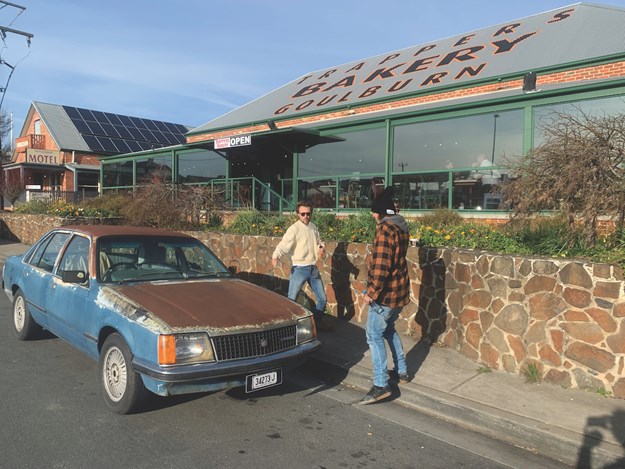 |
| My mechanic mate Juddy reckoned the internal noise wasn't a worry... so I drove the Commodore 2000km before I fixed it! |
Bingo! The noise I thought could be a loose gudgeon pin was in fact a cracked piston skirt.
I swapped the rings and bearings from the damaged piston and conrod to the good second-hand one, plopped it into the bore and reassembled the engine.
Fixed! No more annoying little funny what’s-that noise!
From Unique Cars #483, Sept 2023
Unique Cars magazine Value Guides
Sell your car for free right here
Get your monthly fix of news, reviews and stories on the greatest cars and minds in the automotive world.
Subscribe

.jpg)









